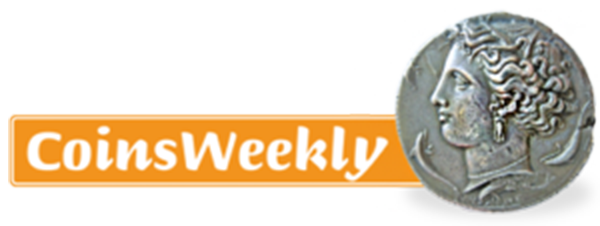Numismatic Issues Concerning Health, Medicine and Women in Times of Covid, Part 1: Nursing and Medical Assistance
Over the course of the pandemic, health care professionals have attracted increased media attention. Gabriele Sturm examined the question of how women in health care professions were depicted on coins in the past, and how they are represented today.
The Coin of the Year: Moon Landing
The US commemorative coin dedicated to the moon landing 50 years ago is the Coin of the Year 2021. The 38th annual awards programme of the COTY Award honours 2019-dated coins in different categories. Find the complete list of winners here!
Coins of the Roman Republic: What Are They Worth?
Are you annoyed because Cosmos of Collectibles does not indicate prices? There’s a good reason for it: Prices change all the time, and especially in the field of ancient coins there are too many small aspects regarding style and minting quality that make a great difference in price. That’s why we prefer to show you how to determine the price yourself. So, you want to know what your coin from the Roman Republic is worth? In this article, we’ll explain you how to do that. From the coin to the price in four steps – it couldn’t be any easier.
The Mints of the USA, Part 1: Philadelphia
Only very few countries still have more than one mint. The United States Mint has four active production sites, making it by far the world’s largest mint. We want to introduce you to the individual mints. We will start with the first mint of the United States, which does not even need to be considered together with the other production sites to win the title of the world’s largest mint: the Philadelphia Mint.
What It Takes to Create the Perfect Gold Blank
Very few people who buy a Vienna Philharmonic as an investment think about how much know-how goes into creating the perfect gold blank. They blindly trust that weight and fineness of their bullion coin are exactly as specified. And they can perfectly do so. The Austrian Mint has decades of experience in producing gold blanks – which is one of the reasons why commemorative and bullion coins of about 60 nations are made with gold blanks from the Austrian Mint.
Olympics, World Championships and Everything Where Germany Flies the Flag
In 1970, Germany minted its Olympic coins. With that, Olympic coins as a field of collection became a mass phenomenon. Since then, attitudes towards sport have radically changed. It not only became socially acceptable, it also gained national significance. We can track this development by looking at coins with sports motifs from German-speaking countries.
A Matter of Perspective: Latent Images on Coins
There is hardly another modern minting technique that spread as quicky as latent images. There is a good reason for it. We explain what a latent image is, how it works and how it found its way onto coins.
What Are Coin Grades?
Are you interested in coins and new to the world of collecting? We’ll be happy to help you with the basics. Today, we talk about the important topic of coin grading. You will see: newcomers have a lot to keep in mind. We answer frequently asked questions about the subject.
The US System of Coin Grading: Sheldon Scale, Grading Companies and Holders
The traditional European system of coin grades is hardy used anymore in the USA. Since the 1970s, new developments have established themselves there, which had a major impact on the international coin trade. We explain what these developments are about and why they are so successful.
Where US Bullion Coins Are Made – The West Point Mint
The West Point Mint is the US mint with the shortest history as the institution was only founded in 1988. And yet, the mint has a very important task: this is where US bullion coins are produced.












